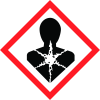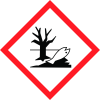R-070N
AccuStandard, Inc
Revision date : 2020-10-06



Note: Ingredients listed on restricted chemical lists
General Information
Revision date
2020-10-06
Product name
R-070N
CAS No.
122-66-7
Supplier name
AccuStandard, Inc
Emergency telephone
1-203-502-7070, +001-203-502-7070
Icons in SDS
Company Information
Company name
AccuStandard, Inc
E-mail address of the competent person responsible for the Safety Data Sheet
edocs@accustandard.com
GHS Information
Signal word
Danger
Hazard Codes
Hazard statements (CLP)
H302, H312, H332, H335, H341, H350, H401, H410, H413
Hazard statements
Code
Statements
H302
Harmful if swallowed
H312
Harmful in contact with skin
H332
Harmful if inhaled
H335
May cause respiratory irritation
H341
Suspected of causing genetic defects
H350
May cause cancer
H401
Toxic to aquatic life
H410
Very toxic to aquatic life with long lasting effects
H413
May cause long lasting harmful effects to aquatic life
Precautionary statements
Code
Statements
P202
Do not handle until all safety precautions have been read and understood.
P233
Keep container tightly closed.
P235
Keep cool.
P262
Do not get in eyes, on skin, or on clothing.
P264
Wash ... thoroughly after handling.
P280
Wear protective gloves/protective clothing/eye protection/face protection.
P284
[In case of inadequate ventilation] Wear respiratory protection.
P338
Remove contact lenses, if present and easy to do. Continue rinsing.
P360
Rinse immediately contaminated clothing and skin with plenty of water before removing clothes.
P404
Store in a closed container.
Section 2
SECTION 2: Hazards identification
2.2 Label elements
0 2 HEALTH 2 0 FLAMMABILITY - continued H350 - This product is or contains a component that is classified (ACGIH, IARC, NTP, OSHA) as a possible cancer hazard. (Carcinogenicity, category 1B) H401 - Toxic to fish and other water organisms. (H410) H413 - May cause long-term adverse effects in the aquatic environment. Precautionary Codes: P202 - This product should only by used by persons trained in the safe handling of hazardous chemicals. P233 - Store in a tightly closed container. (P404) P235 - Store in a cool dry place. P262 - Do not get in eyes, on skin or clothing. P264 - Wash thoroughly after handling. Do not take internally. Eye wash and safety equipment should be readily available. P280 - Protective gloves must be worn to prevent skin contact. P284 - Respiratory Protection: If workplace exposure limit(s) of product or any component is exceeded (see TLV/PEL), or a risk assessment shows air-purifying respirators are appropriate, use of a NIOSH/MSHA approved air supplied respirator is advised. Use a full-face respirator with multi-purpose combination (US) or type ABEK (EN14387) respirator cartridges in absence of proper environmental control. Always use respirators and components tested and approved under appropriate government standards such as NIOSH (US) or CEN (EU). Engineering and/or administrative controls should be implemented to reduce exposure. P338 - Eye contact: Immediately flush with plenty of water. After initial flushing, remove any contact lenses and continue flushing for at least 15 minutes. Assure adequate flushing by separating the eyelids with fingers. P360 - Skin contact: Immediately wash skin with soap and plenty of water. Remove contaminated clothing. Get medical attention if symptoms occur. Wash clothing before reuse.
Signal word
Danger 0
Hazard statements
H302 - Harmful if swallowed. (Acute toxicity, oral, category 4) H312 - Harmful if absorbed through skin. (Acute toxicity, dermal, category 4) H332 - Harmful if inhaled. (Acute toxicity, inhalation, category 4) H335 - May be irritating to mucous membrane and upper respiratory system. (Specific target organ toxicity, single exposure; Respiratory tract irritation, category 3) H341 - This compound is classified as a possible mutagen. There is no acceptible exposure limit for a mutagen. (Germ cell mutagenicity, category 1) H350
2.3 Other hazards
2.2.1 - Symptom of Exposure Health/Environment This compound is classified as a possible mutagen. There is no acceptible exposure limit for a mutagen. (Germ cell mutagenicity, category 1) Danger of serious damage to health by prolonged exposure if inhaled or swallowed. Toxic to fish and other water organisms. (H410) May cause long-term adverse effects in the aquatic environment. (H413)
Potential health effects
May be irritating to eyes. May be irritating to skin. Harmful if absorbed through skin. (Acute toxicity, dermal, category 4) May be irritating to mucous membrane and upper respiratory system. (Specific target organ toxicity, single exposure; Respiratory tract irritation, category 3) Harmful if inhaled. (Acute toxicity, inhalation, category 4) Harmful if swallowed. (Acute toxicity, oral, category 4) 2.2.3 - Routes of Entry Inhalation, ingestion or skin contact. 2.2.4 - Carcinogenicity
Other hazards
continued 2.2.4 - Carcinogenicity - continued

